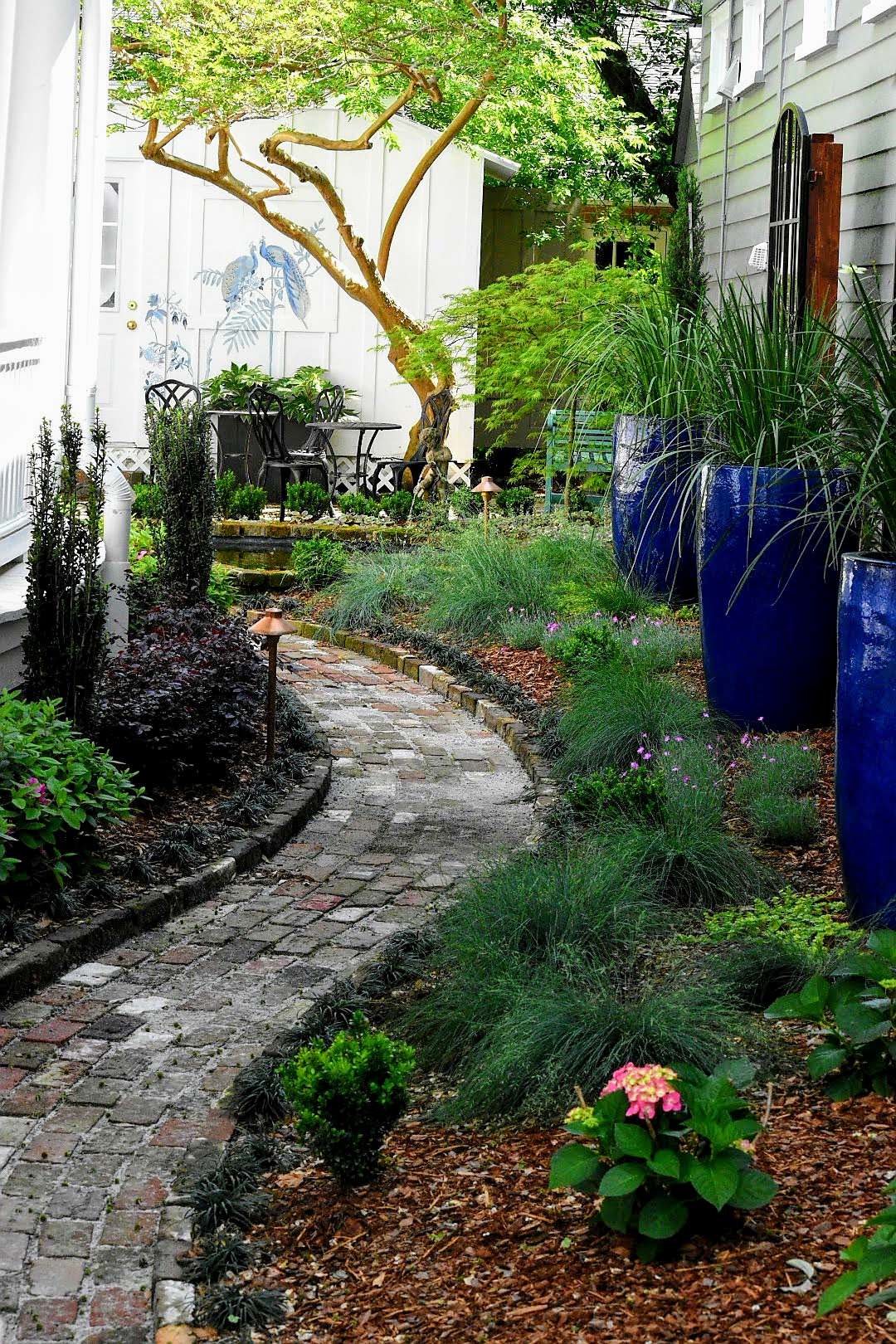Trusted Landscape Designer for Custom-made and Artistic Yard Designs
Trusted Landscape Designer for Custom-made and Artistic Yard Designs
Blog Article
The Role of Garden Layout in Promoting Sustainability and Biodiversity
Garden style is progressively recognized for its prospective to promote sustainability and improve biodiversity within urban and country landscapes. By focusing on native plant types and employing water preservation methods, designers can create settings that not only prosper but additionally require minimal chemical treatment.
Importance of Native Plants
Stressing the use of indigenous plants in yard design is vital for advertising ecological balance and sustainability. Indigenous plants are those that naturally take place in a specific area and have actually adjusted to the local environment, dirt, and wildlife. Their incorporation right into gardens sustains local ecosystems by giving environments and food resources for native pollinators, birds, and various other wildlife.
Additionally, native plants are normally much more resistant to local insects and illness, reducing the demand for chemical pesticides and plant foods. This resistance not just reduces environmental impact yet also reduces maintenance costs for garden enthusiasts. Indigenous plants commonly require much less water than non-native species, straightening with sustainable gardening techniques and minimizing the pressure on neighborhood water resources.
Water Preservation Techniques
Including indigenous plants not just enhances biodiversity yet additionally plays a considerable duty in water conservation within garden styles. Indigenous types are adjusted to neighborhood climate conditions, requiring less water than non-native counterparts. Landscape Designer. This particular decreases the demand for irrigation, saving both water sources and power
Additionally, applying rain yards can capture and filter stormwater runoff, promoting groundwater recharge while minimizing erosion. These yards utilize indigenous plants that grow in damp conditions, successfully taking care of excess water while producing diverse habitats.

An additional efficient strategy is the usage of absorptive paving products in paths and patios, allowing rain to infiltrate the ground instead of running off. This advertises dampness retention and reduces the need for irrigation.
Finally, mounting a rain harvesting system can dramatically contribute to water preservation efforts. Accumulating and saving rainwater for yard use motivates lasting techniques and decreases reliance on local water sources (landscape designer near Daniel Island South Carolina). By incorporating these strategies, yard styles can effectively promote water preservation while sustaining ecological health
Minimizing Chemical Use
While several gardeners look for dynamic and healthy plants, lowering chemical use is important for promoting a lasting ecosystem. The dependence on artificial fertilizers and pesticides can cause soil deterioration, water contamination, and a decline in valuable insect populaces. By adopting organic horticulture techniques, gardeners can improve the wellness of their landscapes while promoting biodiversity.
One reliable approach is to use compost and natural changes, which enrich the soil naturally and enhance its framework. garden design near Daniel Island South Carolina. These practices not just improve plant wellness but also decrease the demand for chemical plant foods - Landscape Designer. Carrying out integrated insect management (IPM) techniques even more reduces chemical inputs by encouraging all-natural killers, such as ladybugs and parasitical wasps, to regulate pest populations
Additionally, picking indigenous plant types can significantly lower the requirement for chemical interventions, as these plants are better adjusted to local problems and are extra resistant versus insects and diseases. By focusing on lasting techniques, garden enthusiasts can produce growing environments that sustain both plant wellness and environment integrity, ultimately bring about gardens that are not just gorgeous but also environmentally liable. Decreasing chemical usage is a vital step in cultivating gardens that honor and boost the all-natural globe.
Developing Wild Animals Environments
Producing dynamic wildlife habitats within yards not just improves biodiversity however also matches lasting gardening techniques targeted at reducing chemical use. By integrating native plants, gardeners can supply important resources such as food and sanctuary for numerous varieties, consisting of birds, bugs, and little mammals. Native plants are well-adapted to regional conditions, needing less water and less chemical inputs, hence aligning with sustainability goals.

Keeping a naturalistic strategy, which may consist of leaving some locations wild or uninterrupted, allows for the natural processes of environments to prosper. This method motivates the presence of useful pests and pollinators, which play a vital role in the health of both gardens and bordering settings. In general, producing wild animals environments is a fundamental element of lasting yard layout, promoting ecological balance and durability while improving the elegance and performance of outside spaces.
Community Involvement in Horticulture
Neighborhood involvement in gardening promotes a feeling of belonging and cumulative duty, changing individual horticulture efforts into common campaigns that profit the whole neighborhood. By entailing community participants in gardening tasks, we can grow not only plants however likewise partnerships and socials media. Neighborhood gardens function as essential rooms for education, where people of any ages can find out about lasting techniques, biodiversity, and ecological stewardship.
Collective horticulture efforts, such as area gardens, promote the exchange of expertise and resources, making sure that all participants can add and profit. This inclusivity boosts neighborhood resilience, as participants collaborate to get over obstacles such as food instability and ecological destruction. Furthermore, area gardens can work as platforms for social expression, permitting people to company website share their heritage with diverse growing and gardening methods.
Furthermore, engaging the neighborhood in gardening initiatives can result in raised recognition of local ecosystems and the relevance of biodiversity. By working jointly to layout and preserve these areas, homeowners cultivate a shared commitment to sustainability, creating a lasting effect on both the atmosphere and community communication. Ultimately, area involvement in horticulture is a powerful tool for advertising environmental stewardship and boosting the lifestyle within neighborhoods.
Final Thought
By highlighting the usage of indigenous plants, implementing water conservation strategies, and minimizing chemical inputs, yards can efficiently sustain regional ecosystems. Collectively, these techniques not just improve the beauty of areas however additionally advertise ecological balance, making garden style an important element in the pursuit of a lasting future.
Report this page